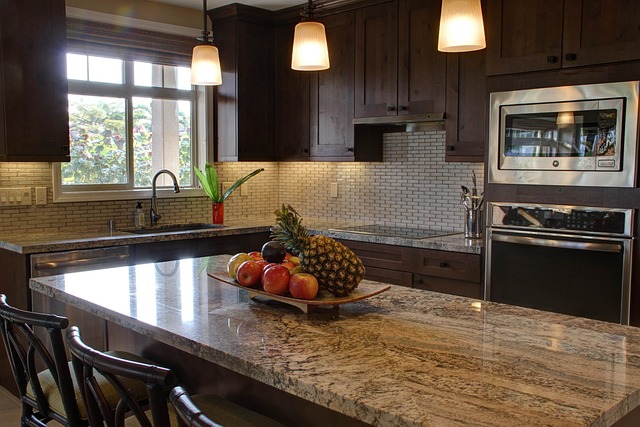Minimalist design, characterized by clean lines, simple forms, and functional storage, prioritizes simplicity and calm in living spaces. Neutral color palettes featuring white, gray, and beige create serene environments, enhancing the elegant aesthetic of minimalist cabinetry. These colors offer depth and texture while maintaining a sense of order, making rooms feel stylish, refined, and uncluttered. In kitchens or bathrooms, minimalist cabinetry with flat-panel doors and open shelving creates a harmonious balance between simplicity and visual interest, fostering a calm and inviting atmosphere.
“Uncluttered spaces and timeless elegance define the allure of minimalist design, which has taken the interior design world by storm. At the heart of this aesthetic lies a simple color choice: neutral palettes. This article explores the transformative power of whites, grays, and beiges in creating serene and sophisticated interiors.
From understanding the core principles of minimalism to unveiling practical tips for minimalist cabinetry, we guide you through a journey towards simplifying your space.”
Understanding Minimalist Design and Its Appeal
Minimalist design, characterized by clean lines, simple forms, and a focus on function, has gained immense popularity in recent years. This aesthetic is not just a trend; it’s a thoughtful approach to space that emphasizes simplicity and calmness. In the context of minimalist cabinetry, for instance, designers strive to create functional storage solutions without visual clutter. Neutral color palettes, such as white, gray, or beige, are often integral to this look, as they provide a blank canvas for other design elements to take center stage.
The appeal of minimalism lies in its ability to create a sense of peace and order. By stripping down spaces to their essentials, minimalist design allows residents to focus on what truly matters—whether that’s spending quality time with family, enjoying hobbies, or simply appreciating the beauty of a neatly organized environment. This style is particularly attractive to those who value efficiency, clarity, and an uncluttered lifestyle.
The Power of Neutral Color Palettes in Interiors
Neutral color palettes, anchored by hues like white, gray, and beige, have long been celebrated in interior design for their ability to foster a sense of simplicity and calm. This understated elegance is particularly effective when applied to minimalist cabinetry, allowing sleek, modern designs to take center stage. By stripping away vibrant or bold colors, these neutrals enhance the overall aesthetic, highlighting clean lines, sophisticated textures, and thoughtful detailing. The result is spaces that exude tranquility, sophistication, and a refined sense of style. Moreover, the versatility of neutral palettes means they can easily accommodate diverse decorative elements, from eclectic accessories to natural materials like wood or plants, creating an environment that feels both cohesive and welcoming.
Creating a Serene Ambiance with White as the Foundation
White serves as a versatile cornerstone in designing spaces with a serene ambiance, especially when paired with neutral tones like gray and beige. This color combination creates a sense of tranquility and openness, making it a popular choice for modern interiors. By focusing on a minimalist approach, such as implementing minimalist cabinetry, designers can enhance the effect. Clean lines and uncluttered surfaces not only emphasize the simplicity of white but also contribute to a calming atmosphere.
The versatility of white lies in its ability to reflect light, making smaller spaces appear larger while brightening up larger ones. When combined with subtle gray shades or warm beiges, white forms a harmonious palette that invites relaxation and serenity. This neutral trio offers a fresh, timeless aesthetic, ensuring the space remains elegant yet inviting—perfect for creating a peaceful retreat in any home.
Adding Depth and Texture with Grays and Beiges
In minimalist design, neutral color palettes are a cornerstone for achieving simplicity and elegance. While white serves as a blank canvas, introducing shades of gray and beige adds depth and texture without clashing with the overall aesthetic. These colors subtly interact to create visual interest, allowing for clean lines and uncluttered spaces that define minimalist cabinetry.
Grays and beiges offer a dynamic range, from soft, warm tones to cool, industrial hues. By carefully selecting these shades, designers can emphasize specific areas or create a sense of depth in flat surfaces. This strategic use of color enhances the perception of space, making smaller rooms appear larger and contributing to the overall calm and refined atmosphere that minimalist design seeks to achieve.
Implementing Minimalist Cabinetry: Tips and Inspiration
When embracing a neutral color palette in your kitchen or bathroom redesign, minimalist cabinetry becomes a natural partner. This design choice is about simplicity and functionality, where every element serves a purpose. Opting for sleek, streamlined cabinets with clean lines and minimal hardware allows the eye to rest on the space itself rather than cluttered details.
To achieve this look, consider flat-panel doors in shades of white or light gray, which offer a contemporary feel. Open shelving can also be incorporated for displaying kitchenware or bathroom essentials while keeping surfaces clutter-free. Remember, less is more—a minimalist approach to cabinetry creates an air of calm and order, making your space feel both elegant and inviting.
Minimalist design, characterized by simplicity and neutral color palettes, offers a calming and elegant aesthetic. This article has explored the appeal of minimalist design and the pivotal role played by neutral colors like white, gray, and beige in creating serene spaces. By implementing these principles, especially in minimalist cabinetry, you can achieve a visually appealing and functional home that promotes tranquility and clarity. Embrace the power of less to enhance your living spaces.
